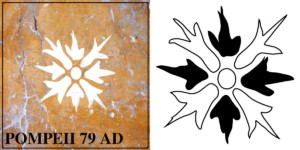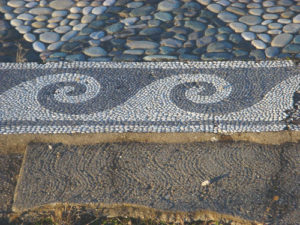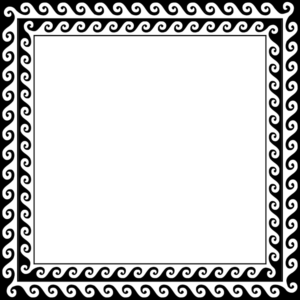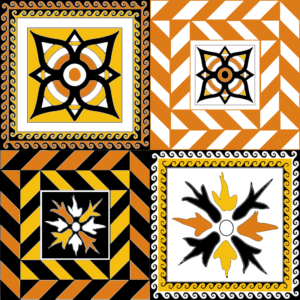I publish every week a model of a Roman or Byzantine mosaic, A few weeks ago I published a drawing of the 6th square medallion of the great geometric mosaic of the Lugdunum museum.
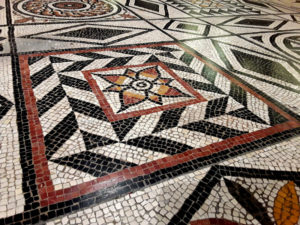
This medallion is a good example of one way Roman mosaicists were using some sort of standardization of their work. This design is composed of 2 parts
- a center flower
- a frame
The center flower or fleuron
and its frame

In fact Roman mosaics borders, although they look much simpler than the designs they frame, were often more difficult to trace than them. It is easier to correct the execution of a slightly crooked figurative motif than a faulty geometric border which must be perfect.
Collections of Models
Roman misaicists and painters often were working from standard models probably kept together in bound collections.
Fleurons are recurring patterns, there are gazillions of them. They are sometimes represented in painting, such as this one, the original of which was painted on the wall of a villa (II.9.4) in Pompeii.
Borders were also often standardized. Wave patterns, for example, originally used by Greek vase painters, were very popular.

